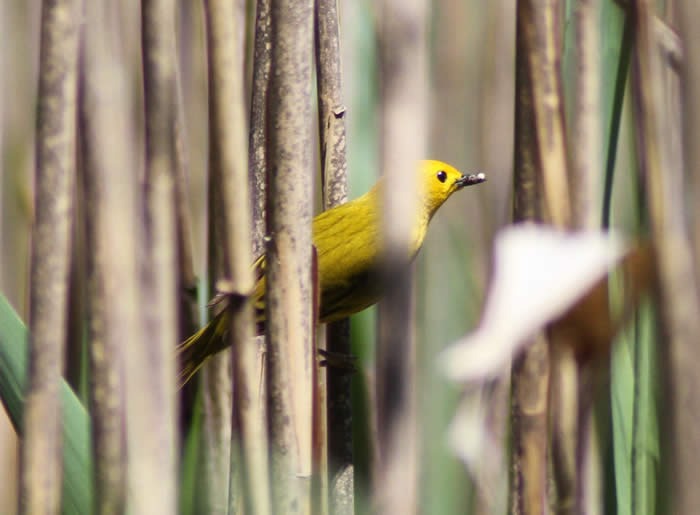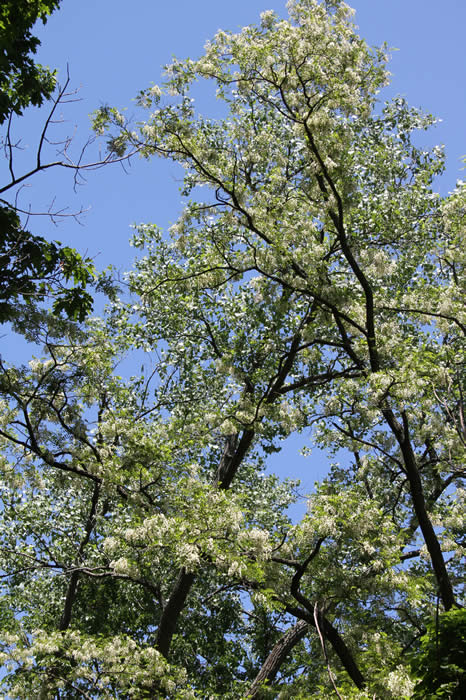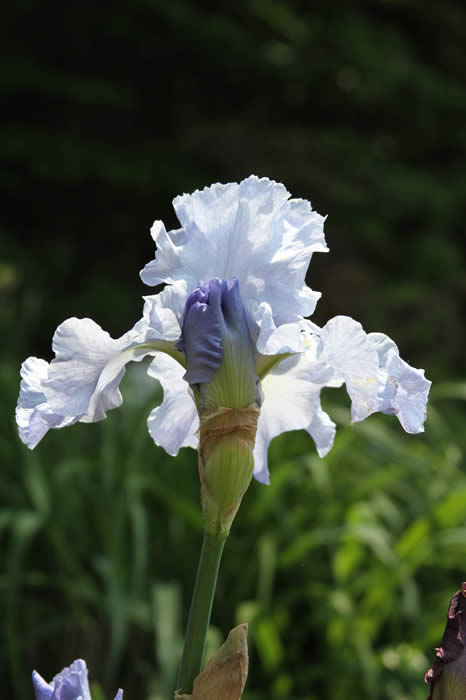The Hudson River Diaries A Compendium of Poetry and Natural History Gleaned from observations in and around Sparkill, New York |
End May 2011 |
Locust flowers along the Hudson river (see below) |
 |
The yellow warbler favors moist thickets for nesting. This one is in the Sparkill salt marsh, clutching an insect in its beak. |
Another view of the yellow warbler |
Blueberries are common in woodlands of the Northeast. This stand was in full bloom May 25 high up on the northern bank of the Sparkill creek, directly at the mouth where it enters the marsh. The famous dog Isabel can be seen prowling in the background. |
A close up of the blueberry flower mass |
The wineberry is an asian species now widespread over the greater New York area; it's also common on Long Island. I took this photograph strictly to show off the gorgeous, jewel-like red hairs on the stem. By end May wineberry is in full bloom; it will set rich, juicy red berries by mid to end July. The season ends after only two weeks, and the berries don't ship well, so your best bet for eating any is to go out, find them, and pick them while the picking is good! |
 |
The Eastern cottonwood sets seed at this time of year; at times the air can be so thick with airborne fluff that it looks like it's snowing; and it certainly looks that way once it collects on the ground. |
. |
Cottonwood seeds in a drift. Tiny dust devils sometimes send these seeds swirling upwards in graceful pirouettes. |
 |
The black locust is also in bloom along the Hudson river; the air is heavy with the rich perfume of its huge flower masses. |
Flowering locusts create a spectacular white band across the Palisades directly to the west of Piermont, NY, nestled on the banks of the Hudson at the far right of the photograph. This swath of trees roughly marks the path of route 9W going north towards Nyack. |
Locust Flowers. This tree provides a major honey flow for bees in the area. |
Mugwort is prolific throughout our area. Introduced from Europe, colonizing roadsides, waste areas, and recently disturbed land, it makes an interesting bitter tea which is reported to aid in digestive problems. |
I don't have any field guide to mosses (is there even such a thing?) so I can't identify this one. The south bank of the Sparkill creek-which, logically enough, faces north-- has prodigious amounts of moss, which has thrived in the wet spring climate. |
One sad sight this spring has been many pairs of Branta canadensis, Canada Geese, without any young to tend to. The strong spring flooding appears to have wiped out their initial attempts to nest. We'll have to see if they try to lay again, or if that was it for this year. |
While I was picking up plastic waste on the trail (I double as a garbage man for less conscientious woodland visitors on my walks) I accidentally uncovered this nest of ants--a species I'm not familiar with. The colony was getting ready to swarm (see the large queens center left) but had to rush to emergency measures after I disturbed their nest. |
Blue eyed grass is one of my favorite wildflowers... so named because the leaves look like blades of grass, right up until these completely astonishing flowers pop out of them. This plant was on the roadside in Tallman State Park. |
Wood Sorrel, which has leaves like clover but is completely unrelated, can be used as a salad herb in small amounts--it has a sharp, acidic bite to it. |
Also known as bluebottles, or blowflies. It pays to use all possible senses when looking for wildlife! The strong smell of carrion tipped me off to the presence of this sizeable dead snapping turtle in the marsh. Of specific interest is the large swarm of iridescent carrion flies attracted to the carcass. |
Sadly, there are times when roadkill becomes a naturalist's best clue to animals present in the area, but rarely seen. This eastern milk snake tried to cross the road, but didn't make it. |
 |
Iris germanica--German iris--are in full bloom in our garden right now. |
A dramatic shot of the iris, unretouched. |
|